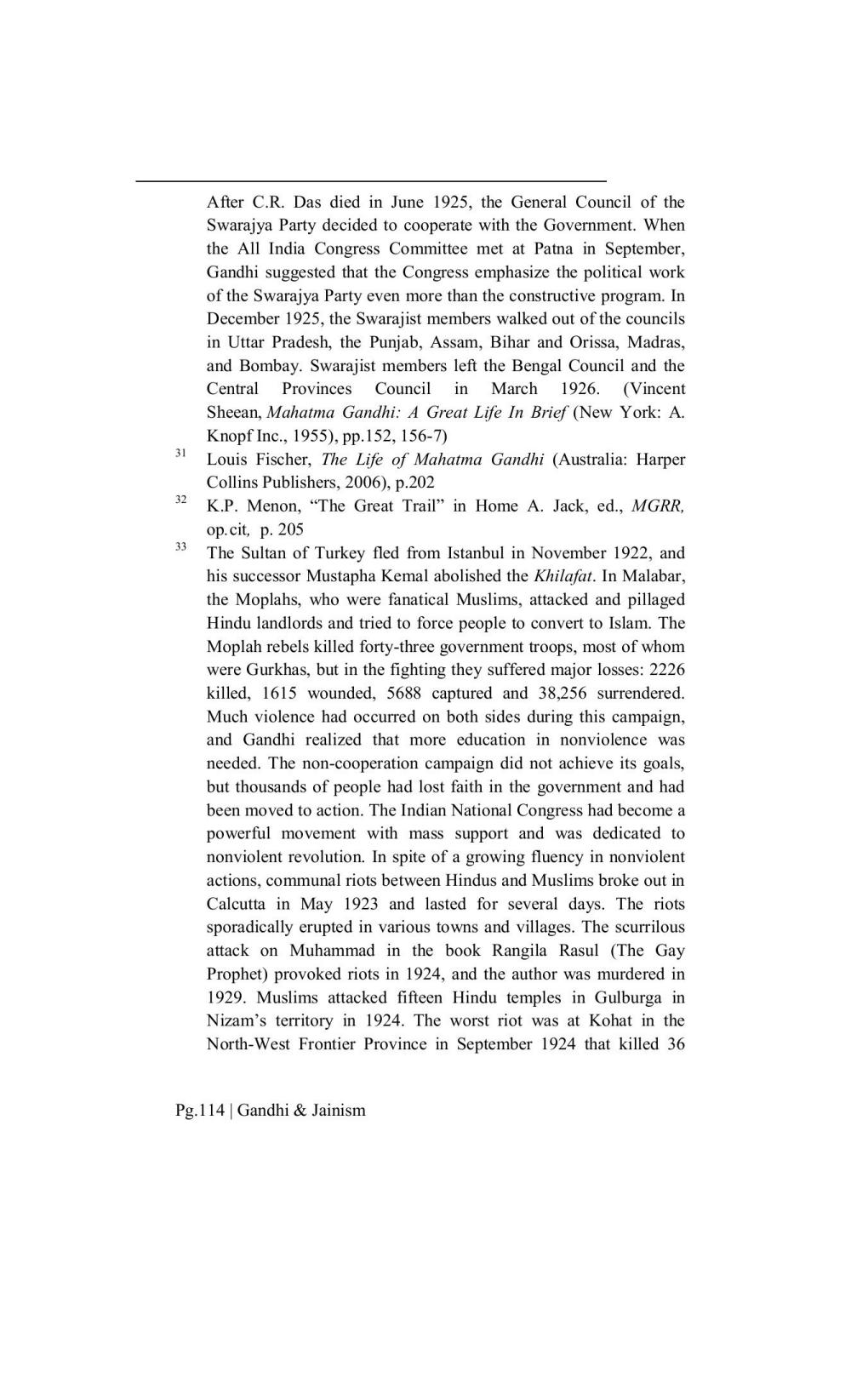________________
31
32
33
After C.R. Das died in June 1925, the General Council of the Swarajya Party decided to cooperate with the Government. When the All India Congress Committee met at Patna in September, Gandhi suggested that the Congress emphasize the political work of the Swarajya Party even more than the constructive program. In December 1925, the Swarajist members walked out of the councils in Uttar Pradesh, the Punjab, Assam, Bihar and Orissa, Madras, and Bombay. Swarajist members left the Bengal Council and the Central Provinces Council in March 1926. (Vincent Sheean, Mahatma Gandhi: A Great Life In Brief (New York: A. Knopf Inc., 1955), pp.152, 156-7)
Louis Fischer, The Life of Mahatma Gandhi (Australia: Harper Collins Publishers, 2006), p.202
K.P. Menon, "The Great Trail" in Home A. Jack, ed., MGRR, op.cit, p. 205
The Sultan of Turkey fled from Istanbul in November 1922, and his successor Mustapha Kemal abolished the Khilafat. In Malabar, the Moplahs, who were fanatical Muslims, attacked and pillaged Hindu landlords and tried to force people to convert to Islam. The Moplah rebels killed forty-three government troops, most of whom were Gurkhas, but in the fighting they suffered major losses: 2226 killed, 1615 wounded, 5688 captured and 38,256 surrendered. Much violence had occurred on both sides during this campaign, and Gandhi realized that more education in nonviolence was needed. The non-cooperation campaign did not achieve its goals, but thousands of people had lost faith in the government and had been moved to action. The Indian National Congress had become a powerful movement with mass support and was dedicated to nonviolent revolution. In spite of a growing fluency in nonviolent actions, communal riots between Hindus and Muslims broke out in Calcutta in May 1923 and lasted for several days. The riots sporadically erupted in various towns and villages. The scurrilous attack on Muhammad in the book Rangila Rasul (The Gay Prophet) provoked riots in 1924, and the author was murdered in 1929. Muslims attacked fifteen Hindu temples in Gulburga in Nizam's territory in 1924. The worst riot was at Kohat in the North-West Frontier Province in September 1924 that killed 36
Pg.114 Gandhi & Jainism




